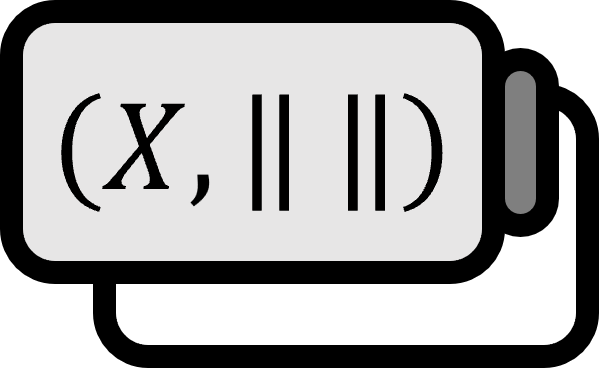Compact Action Spaces
Definition1
Let $X$ and $Y$ be normed spaces, and let $T : X \to Y$ be an operator between these spaces. If for every bounded subset $M \subset X$, the image $T(M)$ of the operator $T$ is precompact, then $T$ is called a compact operator.
Explanation
That $T(M)$ is precompact means its closure $\overline{T(M)}$ is compact. In other words, a compact operator is an operator that maps bounded sets to precompact sets.
The necessity to study compact operators stems from solving integral equations such as: $$ (T - \lambda I)x(s) = y(s) \qquad \text{where} \qquad Tx(s) = \int_{a}^{b} k(s, t)x(t) dt. $$ where $\lambda \in \mathbb{C}$ is a constant, $y$ and the kernel $k$ are given functions. The unknown, i.e., the function to be found, is $x$. David Hilbert discovered that the solvability of the above integral equation depends not on the integral form of $T$ but solely on the compactness of $T$.
A compact operator is also called a completely continuous operator. This nomenclature comes from the following theorem. Generally, (a) does not imply (b), with (b) being a counterexample.
Theorem
Continuity Theorem: Let $X$ and $Y$ be normed spaces.
(a) Every compact linear operator $T : X \to Y$ is bounded. That is, it is continuous.
(b) If $X$ is infinite-dimensional, then the identity operator $I : X \to X$ is not compact (though continuous).
Proof
(a)
The unit ball $U = \left\{ x \in X : \left\| x \right\| = 1 \right\}$ is bounded. Assuming $T$ is compact, by the definition of a compact operator, $\overline{T(U)}$ is compact. Being compact implies boundedness, and according to the lemma below, the boundedness of $\overline{T(U)}$ means there exists a $c$ such that for all $Tx \in \overline{T(U)}$, $\left\| Tx \right\| \le c$ holds.
The following two propositions are equivalent.
- The subset $M \subset X$ of the normed space $X$ is bounded.
- There exists a positive $c \gt 0$ such that for all $x \in M$, $\left\| x \right\| \le c$ is satisfied.
Therefore,
$$ \sup\limits_{x \in U} \left\| Tx \right\| \lt \infty $$
■
(b)
Assume $\dim X = \infty$. The closed ball $B = \left\{ x \in X : \left\| x \right\| \le 1 \right\}$ is bounded. $\overline{I(B)} = \overline{B}$ cannot be compact according to Riesz’s lemma. Therefore, $I : X \to X$ is not a compact operator.
For a normed space $X$,
$X$ is finite-dimensional. $\iff$ $\overline{ B ( 0 ; 1 ) }$ is compact.
■
Properties
Compact Condition
Let $X$ and $Y$ be normed spaces, and let $T : X \to Y$ be a linear operator. Then the following two propositions are equivalent.
- $T$ is a compact operator.
- $T$ maps “every bounded sequence in $X$” to “a sequence in $Y$ that has a converging subsequence”.
Vector Spaces
The set of compact linear operators forms a vector space.
Erwin Kreyszig, Introductory Functional Analysis with Applications (1989), p405-406 ↩︎
